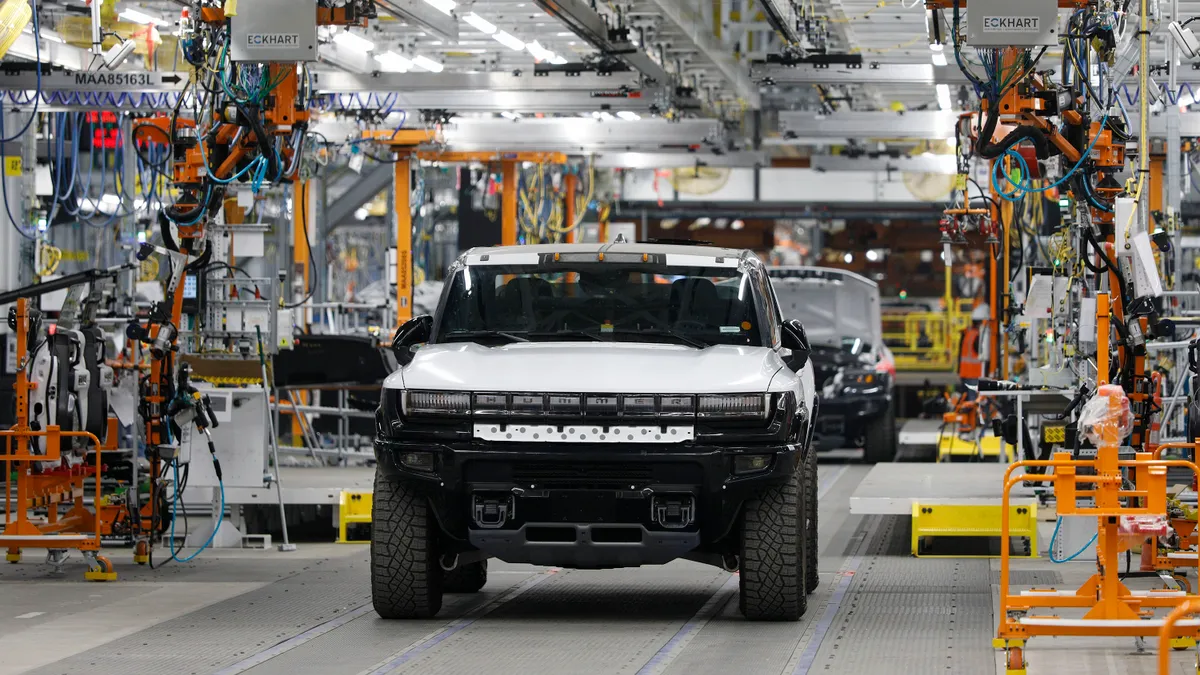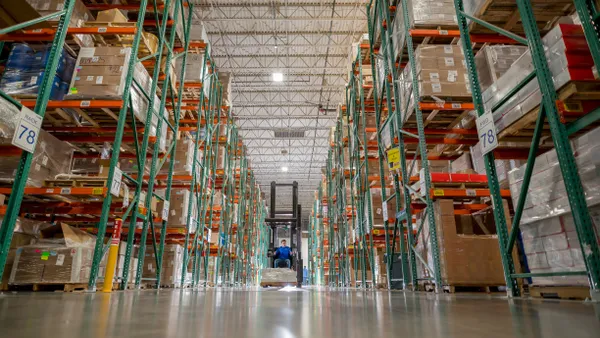Dive Brief:
- Manufacturing inventories continued to expand in December but at a slower pace versus the previous three months, according to the Institute for Supply Management's report on manufacturing activity.
- Manufacturers moving to minimize the amount of inventory on hand to maximize year-end cash flow is a likely reason why the ISM's Manufacturing Inventories Index decreased from November, ISM Manufacturing Business Survey Committee Chair Timothy Fiore said on a media call Tuesday.
- But the index also reflects a better flow of raw materials to factories, Fiore said in the report, as the supplier delivery rate improved. "Transportation networks, a harbinger of future supplier delivery performance, are still performing erratically; however, there are signs of improvement."
Inventory levels continued expansion at year's end
Dive Insight:
Better transportation performance will help manufacturers secure the necessary materials to make enough goods in the face of heightened demand. Customer inventories have been at historically low levels for 17 consecutive months, according to Fiore, spurring more orders.
"Lead times are shrinking slowly, and inventories are growing," said an ISM survey respondent in the fabricated metal products industry. "I hope we have reached the top of the hill to start down a gentle slope that lets us get back to something that resembles normal."
Fabricated metal products and nine other industries, including apparel, machinery and chemical products, reported higher inventories in December, according to ISM. But four industries, such as primary metals and food, beverage and tobacco products, reported a decrease in inventories.
"Supply chain interruptions have dramatically increased in the fourth quarter," said another survey respondent. "Many of our suppliers are unable to deliver product until January or February 2022 or later."
Shipping delays and materials shortages persisted throughout 2021, which led to increased levels of work-in-progress inventories for manufacturers.
Some companies have bolstered their inventories as insurance against future challenges. Lakeland Industries, which makes and sells protective clothing, has increased its finished goods and raw materials inventories "to mitigate threats posed by increasing freight costs and supply chain disruptions," CEO Charles Roberson said on a December earnings call.
Fiore expects the inventories index to increase by 1 point or 1.5 points from December to January with end-of-year working capital targets no longer being a factor. With the spread of the omicron variant of COVID-19, he added that manufacturers will bring in more raw material "just to be safe" from potential disruption. But omicron could also set manufacturers back in terms of staffing levels, limiting their output.
"It's probably not going to drive the economy to shut down," Fiore said of the variant. "The bad side is it's absolutely going to develop a lot more callouts, a lot of absenteeism unplanned. This is going to make factory floor labor management even more difficult."
This story was first published in our Operations Weekly newsletter. Sign up here.














